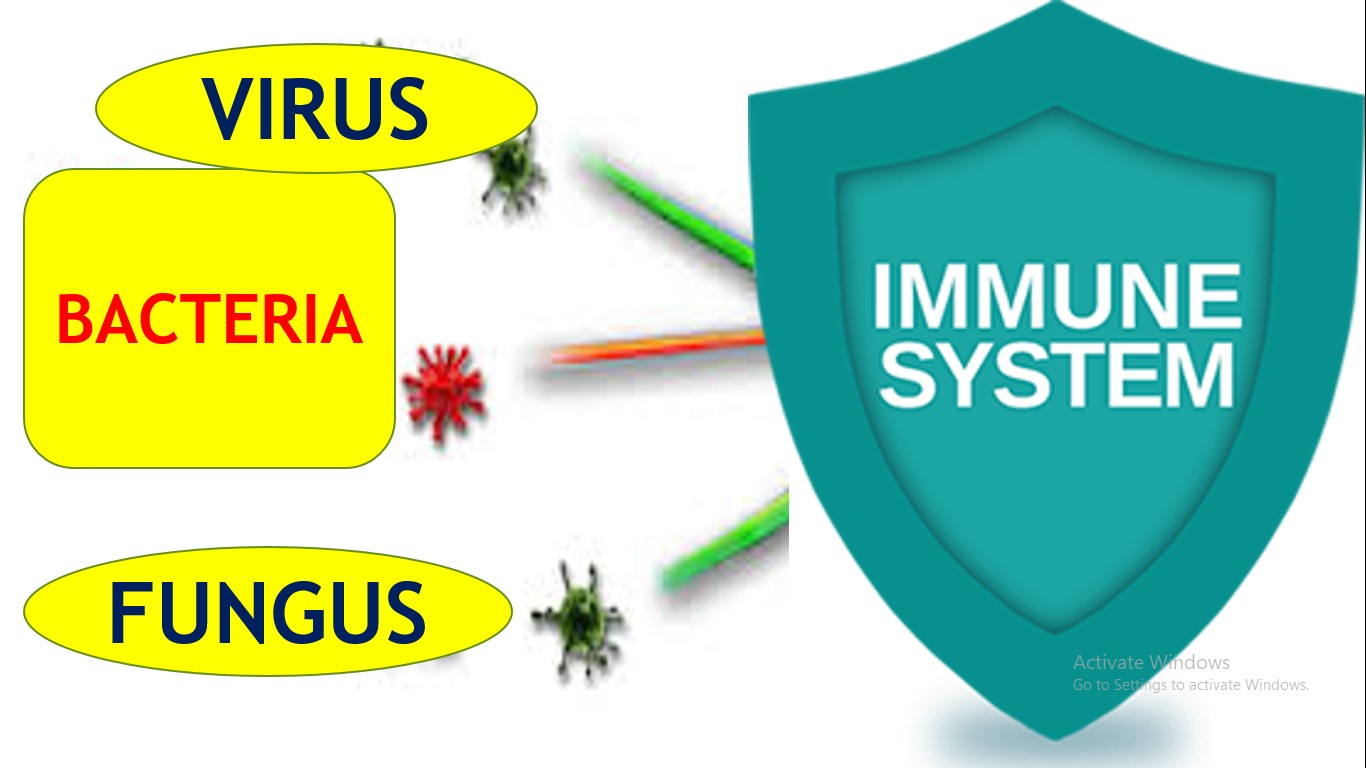
Immunity and Hypersensitivity
Since birth, our bodies are exposed continually to bacteria, viruses, fungi, and parasites, all of which occur normally and to varying degrees in the skin, the mouth, the respiratory passageways, the intestinal tract, and even the urinary tract. Many of these infectious agents are capable of causing serious abnormal physiologic function or even death if they invade the deeper tissues. Components of immune system help us to fight aganist these miscrooragnism regardless of there site in the body. WBCs are formed partially in the bone marrow (granulocytes and monocytes and a few lymphocytes) and partially in the lymph tissue (lymphocytes and plasma cells). After formation, they are transported in the blood to different parts of the body where they are needed. Lymphocytes enter the circulatory system continually, along with drainage of lymph from the lymph nodes and other lymphoid tissue. After a few hours, they pass out of the blood back into the tissues by diapedesis. The lymphocytes have life spans of weeks or months, depending on the body’s need for these cells.
Immunity is divided into innate and Acquired immunity. As discussed in previous lesson, phagocytes play an important role in innate immunity (present at birth) while lymphocytes play a major role in aquired immunity (aquired after birth). Two basic but closely allied types of acquired immunity occur in the body. In one of these the body develops circulating antibodies, which are globulin molecules in the blood plasma that are capable of attacking the invading agent. This type of immunity is called humoral immunity. Antibodies act mainly in two ways to protect the body against invading agents: (1) by direct attack on the invader and (2) by activation of the “complement system” that then has multiple means of its own for destroying the invader. The second type of acquired immunity is achieved through the formation of large numbers of activated T lymphocytes that are specifically crafted in the lymph nodes to destroy the foreign agent. This type of immunity is called cell-mediated immunity or T-cell immunity (because the activated lymphocytes are T lymphocytes).
Under some conditions, immunity may lead to adverse effects suc as, allergy or other types of immune hypersensitivity. There are several types of allergy and other hypersensitivities, some of which occur only in people who have a specific allergic tendency.
At the end of the lesson students will be able to learn
1. Lymphocytes and their role in immunity
2. Innate vs Acquired immunity
3. Antigen Presentation and MHC proteins
4. Antibodies and complement pathway
5. Memory T and B cells
6. Active vs Passive immunity
7. Hypersensitivity and its types



